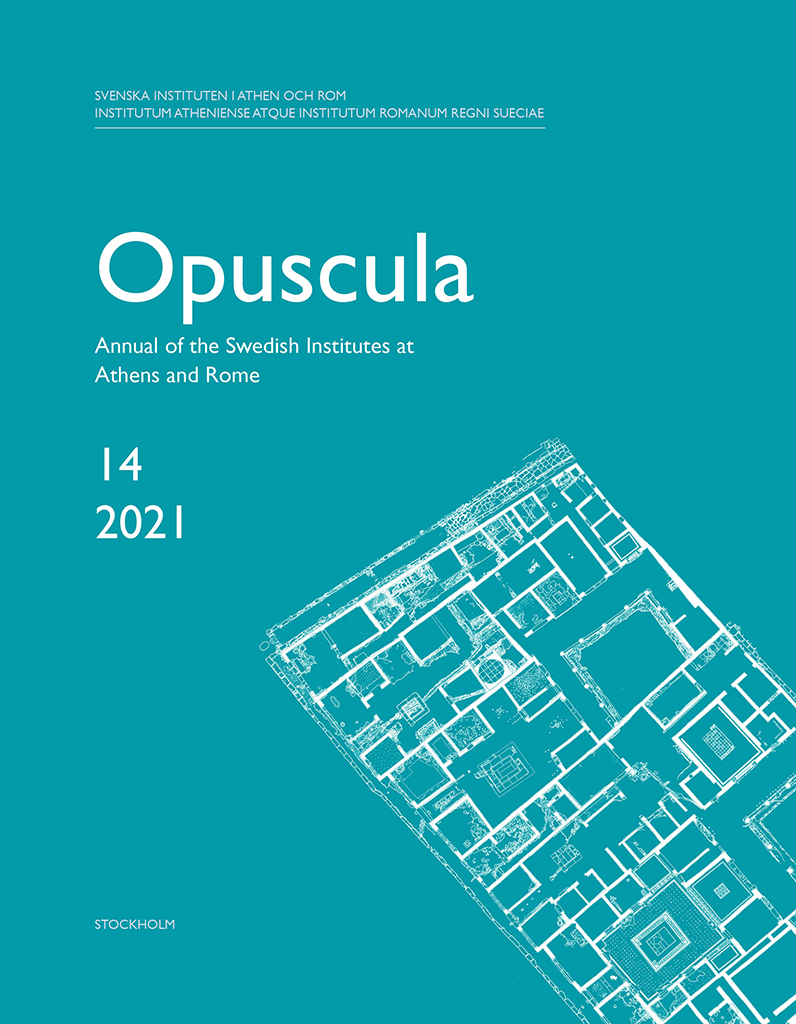Opuscula is published by the Swedish Institutes at Athens and Rome, with the aid of a grant from the Swedish Research Council. Distributed by Eddy.se AB. View journal at ERIH PLUS. All content available with open access. Palaepaphos-Teratsoudhia Tomb 288 (c. 1650 BC–c. 1200 BC) By Vassos Karageorghis (University of Cyprus) & Efstathios Raptou (Department of Antiquities, Cyprus), with appendices by Alexander Donald, Gisèle Clerc & Anna Spyrou Abstract This paper presents a new tomb complex of the Late Bronze Age at Palaepaphos-Teratsoudhia in south-west Cyprus. Although looted, Tomb 288 yielded a representative repertoire of funerary gifts, including seals and scarabs, ranging chronologically from the very beginning of the Late Bronze Age to Late Cypriote IIC, roughly from 1650 to 1200 BC. Tomb 288 has characteristics which are typical of Late Bronze Age tomb architecture in Cyprus and well known in the Paphos region, as well as aspects which have not previously been observed in any necropolis of the period, such as the large central “pillars” which support the roof in Chambers A and B. The tomb’s finds comprise representative examples of the ceramic production of Palaepaphos for a period of some 400 years and illustrate the wealth of this…
Published by the Swedish Institute of Classical Studies in Rome. Distributed by Astrom Editions. From huts to houses. Transformations of ancient societies. Proceedings of an international seminar organized by the Norwegian and Swedish Institutes in Rome, 21–24 September 1997 Edited by J. Rasmus Brandt & Lars Karlsson Abstract The present volume contains 43 of the 43 announced papers and 11 posters presented at an international conference in Rome in 1997. In a cross-cultural context, the papers examine various aspects of transformation processes connected with architectural changes, covering themes such as building types and development, building function, building technology, and finance and organization. Within this framework, the investigations span a long era, extending from the Mesolithic period to modern times, including experimental reconstructions of ancient dwellings. From the geographical and cultural point of view the contributions cover the Middle East and Europe from the Arabian deserts to the Arctic Ocean, though with a slight emphasis on central Italy in the Iron Age. The last article is a translation from Swedish to English of a study on shepherd huts in the Roman campagna made by S. Erixon in 1932, an article often quoted in studies on primitive architecture, but not easily accessible…


